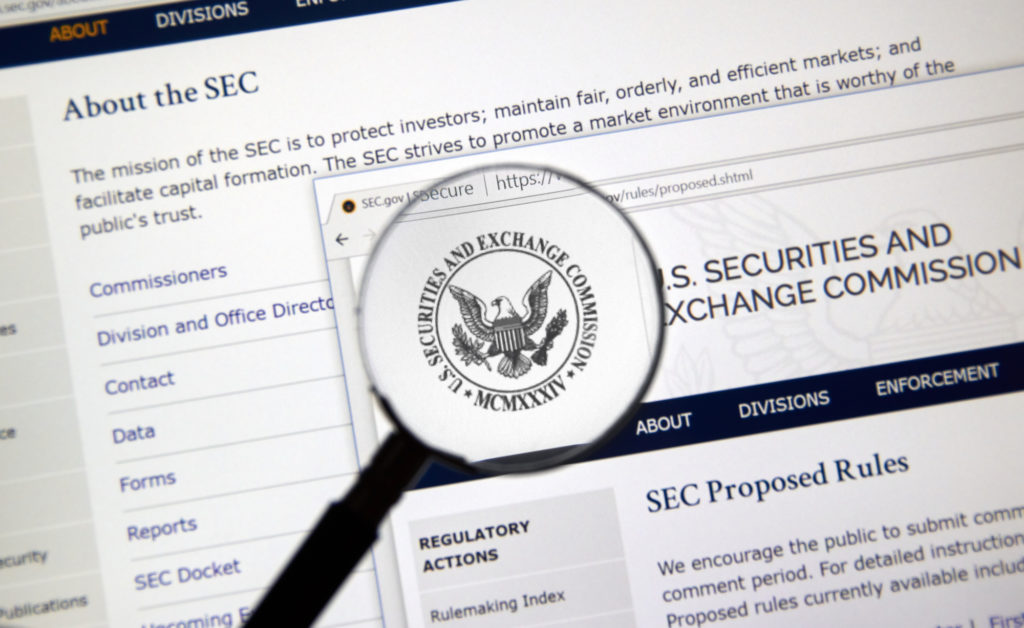
On April 30, 2020, ZDNet reported that there have been more than 1,000 SEC filings over the past 12 months listing ransomware as a risk factor – with more than 700 in 2020 alone. These filings include annual reports (10K and 20F), quarterly reports (10Q), and registration forms (S1).
Even the most sophisticated technology companies now insert the word “ransomware” into their Risk Factors section. See Alphabet, Inc., Form 10-Q, dated April 28, 2020, at 50 (“The availability of our products and services and fulfillment of our customer contracts depend on the continuing operation of our information technology and communications systems. Our systems are vulnerable to damage, interference, or interruption from terrorist attacks, natural disasters or pandemics (including COVID-19), the effects of climate change (such as sea level rise, drought, flooding, wildfires, and increased storm severity), power loss, telecommunications failures, computer viruses, ransomware attacks, computer denial of service attacks, phishing schemes, or other attempts to harm or access our systems.”).
As reported by ZDNet, companies as varied as American Airlines, McDonald’s, Tupperware, and Pluralsight also list ransomware as a potential risk to their business.
By inserting the word “ransomware” into a Risk Factors section, reporting companies may have elevated the relevant standard for companies who do not reference ransomware. By way of background, in October 2011, the SEC began planting cyber risk disclosure seeds when it issued non-binding disclosure guidance regarding cybersecurity risks and incidents. Back in 2011, the SEC wrote: “Although no existing disclosure requirement explicitly refers to cybersecurity risks and cyber incidents, a number of disclosure requirements may impose an obligation on registrants to disclose such risks and incidents.” Seven years later, this non-binding guidance became binding.
On February 26, 2018, the SEC issued binding guidance that recognizes: “Companies face an evolving landscape of cybersecurity threats in which hackers use a complex array of means to perpetrate cyber-attacks, including the use of stolen access credentials, malware, ransomware, phishing, structured query language injection attacks, and distributed denial-of-service attacks, among other means.” By expressly listing ransomware two years ago in its Statement, the SEC was making it quite clear that the current threat landscape includes the risk of ransomware and that directors and officers have to address this likely risk.
More to the point, the Statement and Guidance on Public Company Cybersecurity Disclosures instructs “that the development of effective disclosure controls and procedures is best achieved when a company’s directors, officers, and other persons responsible for developing and overseeing such controls and procedures are informed about the cybersecurity risks and incidents that the company has faced or is likely to face.”
Not surprisingly, the failure to disclose a prior ransomware attack would also be actionable. See SEC Statement at 14 (“In meeting their disclosure obligations, companies may need to disclose previous or ongoing cybersecurity incidents or other past events in order to place discussions of these risks in the appropriate context. For example, if a company previously experienced a material cybersecurity incident involving denial-of-service, it likely would not be sufficient for the company to disclose that there is a risk that a denial-of-service incident may occur.”).
If ransomware incidents were avoided altogether, however, there would be no liability attached to associated filings no matter what was communicated to the market. Moreover, even when attacks were not avoided, little disclosure risk would exist if the company applied best practices to avoid such an incident and provided an accurate accounting of what took place when an incident did take place. To that end, deploying proactive approaches considered state-of-the-art when dealing with ransomware risk will naturally mitigate against any potential SEC disclosure risk.
For example, there is at least one novel solution that can reduce ransomware attacks by anticipating when a compromised system’s ransomware package will be released and then neutralizing the ransomware threat before any ransomware release actually takes place. By evaluating and deploying such cutting-edge solutions, companies will be well positioned to neutralize any potential shareholder claims – as well as satisfying the much more important task of protecting corporate data and other digital assets. Thankfully, “it is never too late to begin importing a more robust security and privacy profile into an organization – which is the only real way to diminish the risk of a ransomware attack.” As with most successful corporate endeavors, management buy-in will typically be the necessary first step.